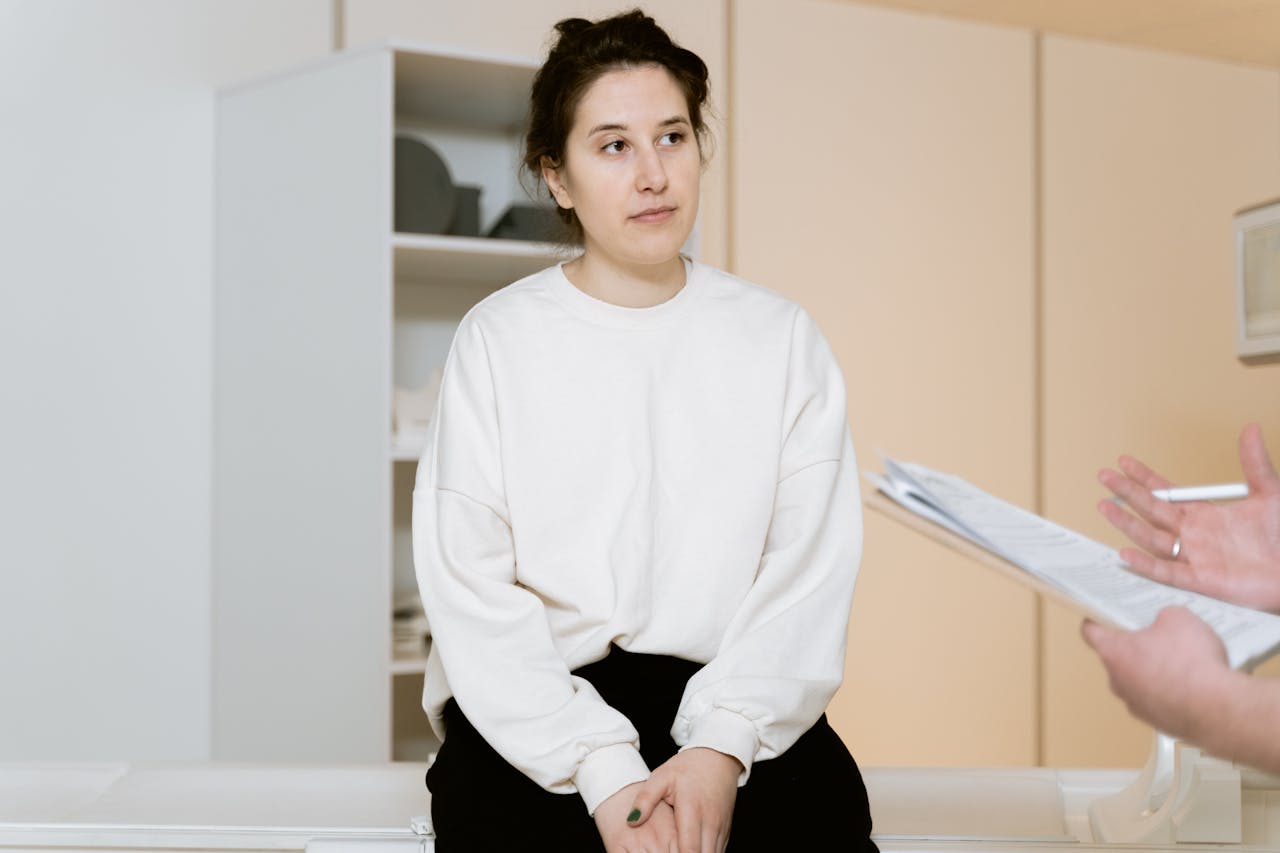Right now, research suggests that at least 11 percent of American women and people who were assigned female at birth are living with endometriosis, a chronic inflammatory disease that can lead to debilitating pain and heavy bleeding, among many other symptoms.
However, according to the Cleveland Clinic, this statistic likely isn’t that accurate, because the condition is notoriously underdiagnosed. This could be because the symptoms vary and are easy to miss, but it’s also likely to do with gender bias in medicine. “Studies have found that women are less likely to feel listened to and taken seriously, and are assumed to have a higher pain threshold,” Alice Broster, a health journalist, explains for the Endometriosis Foundation of America.
In the UK, the BBC reported in 2019 that it can take up to seven and a half years to receive a diagnosis. In the US, Yale Medicine notes it can take between four and 11 years after the onset of symptoms.
Because of this, experts stress that it’s important for women to advocate for themselves when it comes to speaking to medical professionals about any concerns relating to their reproductive health. “I think one of the most important things that women can do if they have a diagnosis of endometriosis is to continue to speak out about their symptoms and also educate other women around them on this diagnosis and the different treatment options available,” Ann Peters, MD, MS, told Medical News Today.
With a diagnosis, endometriosis is far easier to treat, of course. Sufferers usually are offered medication and surgery, but some lifestyle changes may also help to ease symptoms. Find out more about which diet is best for endometriosis below, but first, here’s a little bit more about the condition.
 Pexels
Pexels
What is endometriosis?
Endometriosis is an inflammatory condition that can affect anyone with a uterus. It causes tissue that is similar to the lining of the uterus to grow in the wrong places, including the space behind the uterus, the ovaries, the fallopian tubes, and even organs that aren’t related to the reproductive system, including the bladder, intestines, diaphragm, and lungs.
It isn’t known exactly what causes endometriosis, but research suggests the disease is likely driven by estrogen, the main hormone that regulates the female reproductive system.
“When this tissue grows in the wrong places, it can cause painful symptoms that can impact not only your menstrual cycle but also your daily life,” explains the Cleveland Clinic. “Some people with endometriosis have trouble getting pregnant due to scarring and fallopian tube blockage as well.”
The symptoms of endometriosis can vary from person to person, and sometimes also depend on where the tissue is growing in the body, but some of the most common ones include extremely painful menstrual cramps, back pain, heavy bleeding between periods, constipation, and bloating.
“It is a condition that affects women of all ages. Most commonly we do diagnose it during the reproductive age time. However, any time a period is really causing significant pain, patients should be aware that pain with periods that are affecting or impacting their quality of life is not normal.” —Megan Billow, DO, to the Cleveland Clinic
Does endometriosis ever go away?
According to Yale Medicine, endometriosis can sometimes clear up on its own without any treatment required. However, for many people, it is a life-long, chronic condition. “Hormone therapy can slow the progression of the condition and reduce pain, and surgical procedures can lessen pain,” it notes. “But symptoms often recur after these treatments.” The publication continues to explain that for up to half of people treated for endometriosis, the condition will recur again within five years.
Alongside medical treatment, some experts recommend lifestyle changes to help manage endometriosis.
The Endometriosis Foundation explains: “Endometriosis can influence your bodily needs, from your hormones to your skin; your energy levels to your mental health, your eating habits, to how well your body digests, absorbs, and uses food. Your main priority should be to ensure that your diet meets all of your nutritional needs including energy, fats, protein, vitamins, and minerals.”
“Despite what we see online, there isn’t at present, any known diets or foods that can reliably treat or manage Endometriosis,” it continues.
However, the foundation also acknowledges that reducing inflammatory foods, like red meat, processed foods, and alcohol, may be beneficial for some people with the condition. It also explains that “it is very likely” that anti-inflammatory foods, like fruits and vegetables, are important for people with endometriosis to consume.
 Pexels
Pexels
BECOME A VEGNEWS VIP: Get exclusive product deals, freebies, and perks galore!
Which diet is best for endometriosis?
Leah Tsui, MS, RDN, LDN, a dietitian and nutritionist at Ciba Health, agrees that, while research is limited into how diet changes can help people with endometriosis, there is some evidence to suggest that certain nutrients are likely beneficial. Tsui calls out Fiber, in particular.
“What we know from studies so far is that diet may be helpful in the prevention and treatment of endometriosis and pain associated with it,” she told VegNews. “One study that discussed reducing dietary fat and increasing dietary fiber found that it reduced circulating estrogen concentrations, which could be a potential benefit for individuals with endometriosis, as it is an estrogen-dependent disease.”
Fiber-rich foods include legumes, whole grains, nuts, seeds, fruits, and vegetables. You can find our guide to which foods contain the most fiber here.
Tsui also notes that prioritizing foods with polyphenols may be helpful, as these are antioxidants with anti-inflammatory compounds. Fruits, like blackberries, blueberries, strawberries, and cherries, and vegetables, like kale, spinach, and broccoli, for example, are all good sources of polyphenols.
There is also research to suggest that certain vitamins, including vitamin E, vitamin C, and vitamin D, may help to manage endometriosis. “A 2020 meta-analysis found that low vitamin D levels were associated with increased risk of endometriosis diagnosis and increased severity of symptoms, so vitamin D may have a protective purpose against endometriosis,” explains Tsui. “A randomized control trial found that supplementation with vitamins C and E significantly reduced endometriosis symptoms, compared with placebo.”
If you’re concerned about endometriosis, it’s important to consult with your healthcare provider before making any major lifestyle changes. You can also find out more about diagnosis advice and treatment options from the Endometriosis Foundation of America’s website here and The Endometriosis Foundation in the UK’s website here.
For more plant-based stories like this, read:
JUMP TO ... Latest News | Recipes | Guides | Health | Subscribe









